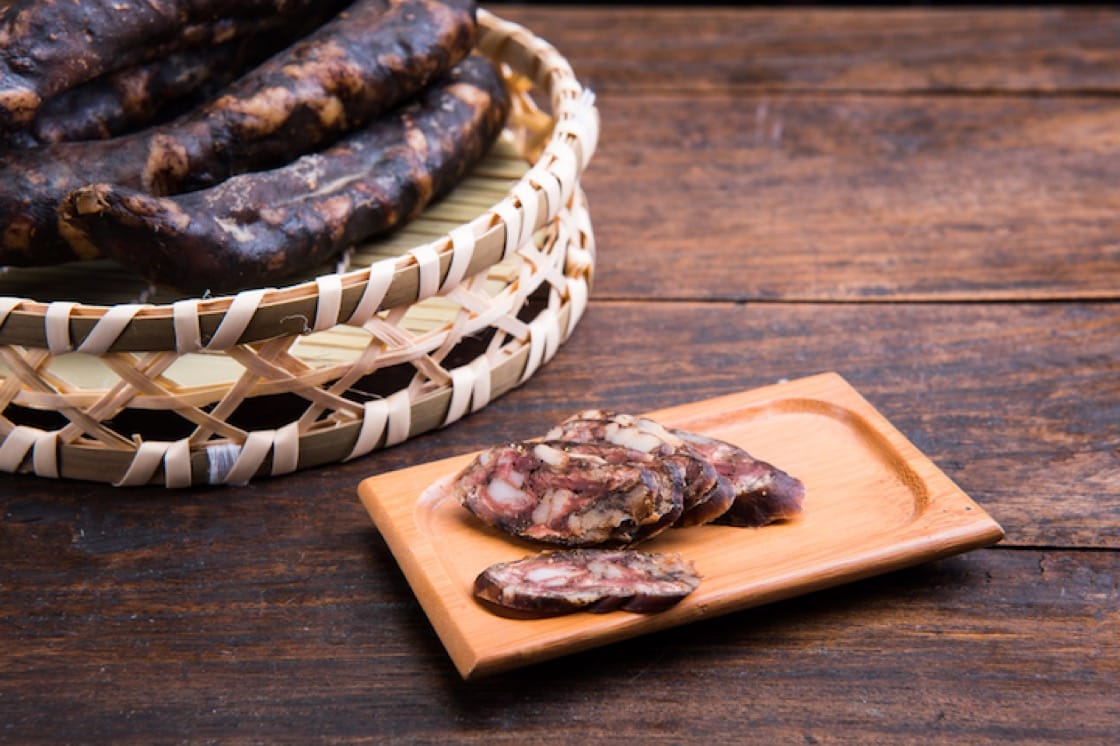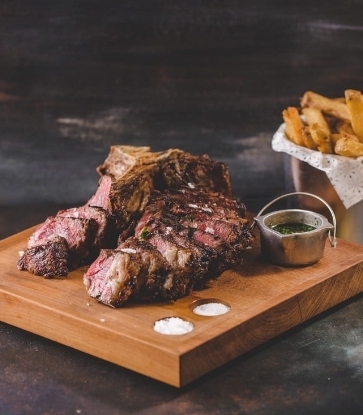A Two Millennia Culture of Curing
As in many other cuisines, curing in Chinese food originated from a time when food couldn’t be easily obtained or stored, and preservation methods were not aided by modern technology. The Chinese word for “curing” first appeared in one of the oldest literary texts, The I Ching, which was complete more than 2,000 years ago.
Furthermore, the words “curing” and “hunting”—both pronounced as “la”—were used interchangeably in the ancient Chinese language. During the eighth day of the 12th month in the lunar calendar, a hunting ceremony was held in which the ancient people commemorated their ancestors and gods. It was known as the Laba Festival, in which “la” signified “the month of curing” as people called it, and “ba” refers to the eighth day. The Laba congee incorporating multiple types of crops was also prepared for the ceremony.
The ingredients and methods adopted in curing differ greatly throughout China, from the products more familiar to Hong Kong people such as cured sausage, pork belly and duck, to the rare varieties of cured fish, rodent and egg. Cantonese cured meat has a more pronounced sweetness thanks to the use of sugar alongside salt, wine and soy sauce.
Where do you find the best cured meat in Hong Kong?
Many families in Hong Kong procure cured meat once a year during autumn for consumption until spring. Finding a quality cured meat shop isn’t a difficult task. Established locations include Sheung Wan’s Wo Hing, Ser Wong Fun and Yung Kee in Central, as well as She Wong Yee in Causeway Bay. Where to go depends on your taste and budget, as there is a quite large range of flavor profiles and price points among these options. All of them, except for Wo Hing, are full-fledged restaurants where you can enjoy an authentic, warming feast with your favorite kind of cured meat. Here's a brief introduction to the different types of cured meats you can find in Hong Kong.

Lap Cheong, as it is locally known, is the most iconic Cantonese cured meat. To prepare the sausage, fatty and lean pork meat are mixed and seasoned before filled into the casing. The formed sausage will then have holes pierced on the skin and dried in an oven. It is one of those food items that everyone has a secret recipe. The proportion between fatty and lean meat makes an immediate impact in determining the sausage’s texture. Some products stand out for the addition of black pepper or using an alternative type of wine. Even the choice between fresh casings or those stored for a while create a different bite. So sophisticated is the subject that talking about which cured sausage is the best will surely stimulate some heated discussion at a dining table.
Liver Sausage
Other than the addition of animal liver in the meat mixture, liver sausage is prepared the same way as regular cured sausage. In modern times, duck liver is applied in favor of that of a pig. Imaginably, a liver sausage has a more gamey, cloying flavor which limits how much one can eat it. But its deep fragrance is simply irresistible.
Golden-Silver Liver Sausage
The “sausage” is composed of pork liver stuffed with fatty pork. It is so-named because the liver’s orange-colored surface shows off the half transparent pork meat inside. If you're lucky enough to spot this delicacy at a traditional cured meat shop, you’re in for a treat.

Cured pork belly is a more straightforward item to prepare in the world of cured meats, compared to its elongated counterpart. All it takes is seasoning the meat and drying it under the sun or in an oven. Some even complete the preservation process at home. Cured pork belly tastes sweeter than cured sausage, and is usually added to fried vegetables for a kick of umami.
Cured Duck
The preparation of cured duck involves cleaning the innards of a duck, washing it and then preserving it in salt. Because cured duck tends to go bad more easily, some shops would cure the duck in more salt and extend the time of preservation. The downside of this treatment is the excessive saltiness in the meat, which requires blanching to desalt before it’s ready for cooking. Top-notch cured duck, with a balanced amount of salt and seasoning, and meat in springy texture, is hard to find. Instead of a whole duck, cured duck leg has become a family-friendly option in recent years as it takes less prep work.






















